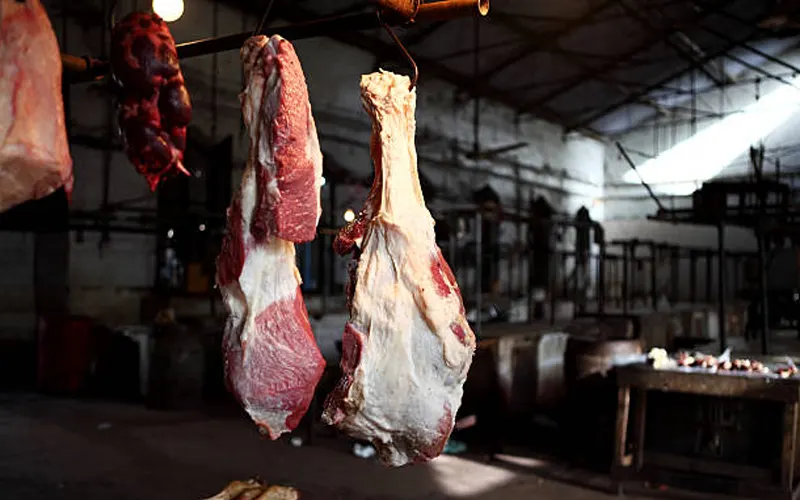With recent raids uncovering illegal donkey slaughterhouses including a major operation in Islamabad’s Tarnol area where over 50 donkeys and 25 mounds of meat were seized, many citizens are rightfully concerned about unknowingly consuming donkey meat mislabeled as beef or mutton.
Though donkey meat is banned in Pakistan, it can still be hard to visually distinguish from cow or goat meat. Here are some expert-backed tips to help you identify the difference:
Color and Texture
Beef/mutton: Lighter in color, with more visible marbling (fat lines). Fat is typically creamy white or yellowish.
Donkey meat: Deep red, darker than beef or goat. Fine-grained with less fat, and the fat appears whitish-gray.
Stickiness and Fiber
Beef/mutton: Fibers are firmer and stick to the palm when you press a piece of raw meat.
Donkey meat: Fibers are softer and slippery; meat might fall off your hand instead of sticking
Smell
Donkey meat has a sweet or strange pungent odor, especially noticeable when cooked.
Women cooking meat may notice this off-putting smell more clearly than men.
Taste and Chewiness
Donkey meat is often slightly sweet and tougher to chew compared to beef or goat meat.
Boiling Test (Folk Method)
In some countries like Kenya, people note that donkey meat produces more foam than usual when boiled—though this is not a foolproof test.
Precautionary Measures
Always buy meat from government-certified shops or markets where animals are slaughtered in front of you.
Look for official health stamps or certification on packaged meat.
If in doubt, contact your local Food Authority or submit a sample for lab testing.
What Happened in Islamabad?
Authorities discovered an illegal donkey slaughter house in Tarnol, where foreign nationals were operating a cold storage facility and supplying donkey meat, mostly for foreign residents and export.
No confirmed supply to local markets has been found, but public concern remains high.
Vigilance and awareness are key.
If something about the meat’s color, smell, or texture seems unusual, avoid using it and report the matter to food safety authorities.










